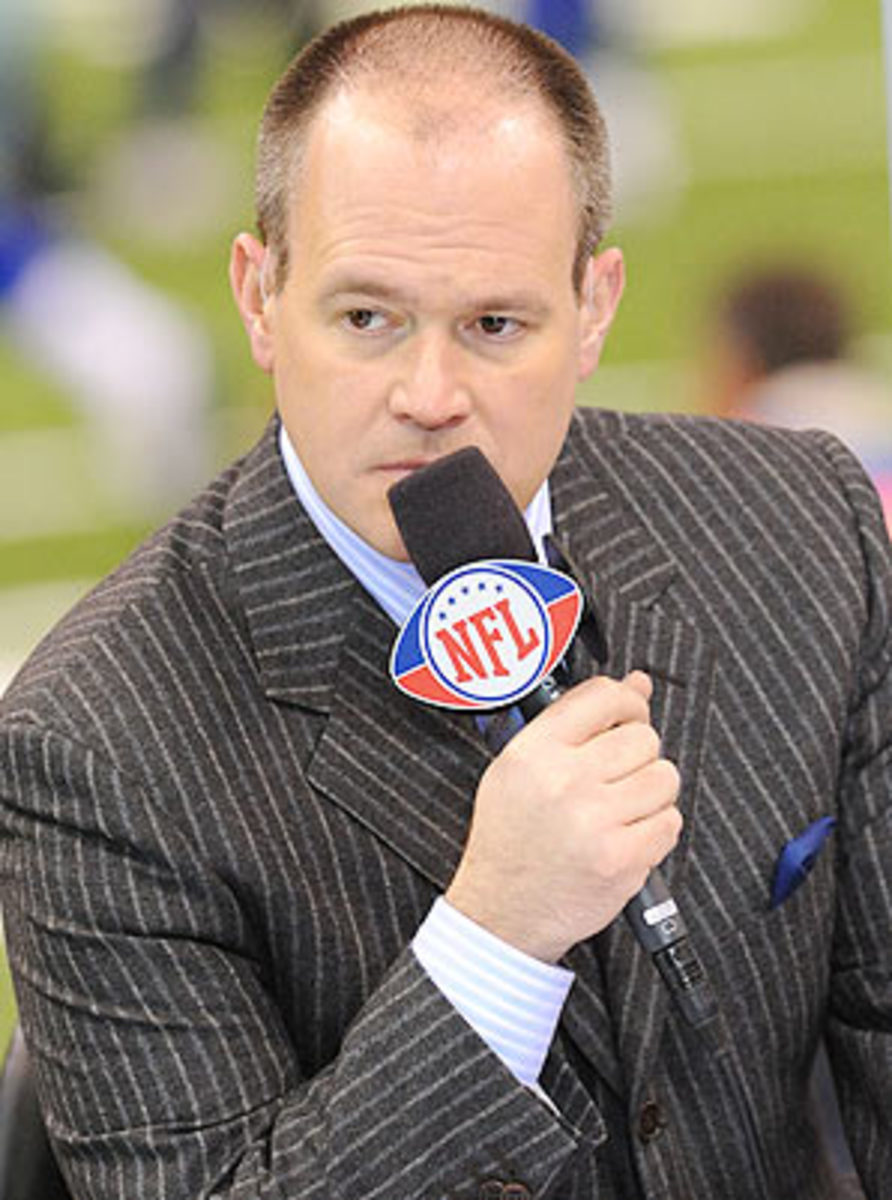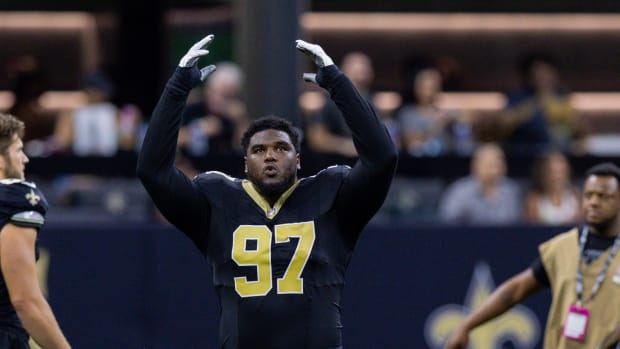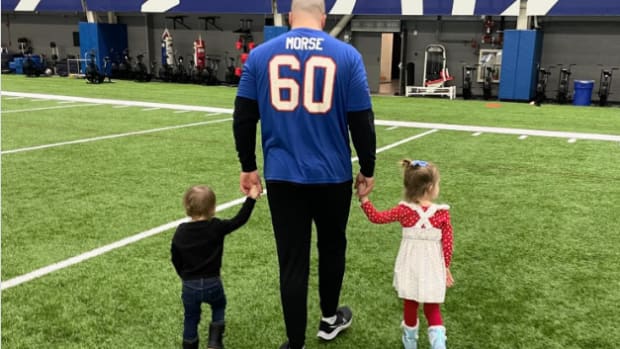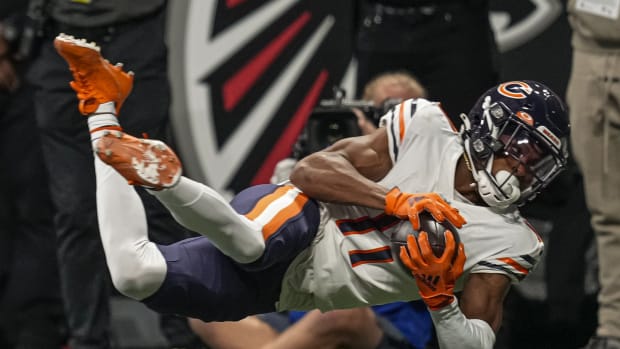
Seven years in, NFL Network still battling cable companies
Despite the intense popularity of the NFL, many of its fans are unable to subscribe to the league-owned NFL Network through their cable television provider. And unless significant progress is made in the next few months, they'll be without it this coming season, just as they have been since the NFL Network's creation seven years ago.
Cable subscribers in New York City and Long Island know this too well. Those in St. Louis are in the same boat, as are many who live in Dallas-Fort Worth, Los Angeles, Charlotte, Raleigh, Cincinnati, Orlando and other major media markets. All with limited cable availability to the channel, which has exclusively broadcast eight live games each season since 2006.
Some of these fans can still watch those contests because every NFL Network game that sells out -- and all 32 previous ones were sold out -- is simultaneously broadcast on free, over-the-air TV in the primary market of the home and away teams. But those fans who live in non-primary markets (generally defined as those living outside a 75-mile radius of the team's stadium) are out of luck. Their only option, should it be available to them, would be to switch from a cable provider to a satellite provider that offers NFLN. For a variety of reasons, possibly including convenience, cost and reliability, those fans may prefer to keep their cable provider.
There are about 56.3 million households with NFLN, a significant but underwhelming number when considering that the two-year-old MLB Network already has 55.3 million households, while the three-year old NHL Network, which offers coverage of a considerably less popular league than the NFL, has approximately 34 million. The NFL, of course, would like more homes to have its channel, which the league spent in excess of $100 million developing. But the league has encountered difficulties in convincing cable companies to include NFLN in its channel packages, particularly basic packages. The major holdup has been over price.
In recent years, NFLN executives have asked cable companies to pay approximately 70 cents a month per subscriber of NFLN. To give that price some context, most channels cost less than 50 cents per subscriber, some less than a quarter. Comparatively few channels, in fact, cost more than 70 cents per subscriber. MLB Network costs just 24 cents per subscriber, while providing four percent of its league's games live and in full this season as compared to the NFL Network's three percent.
Selection of channels for basic packages is a crucial decision for cable companies. The more channels with high subscription costs are included as basic channels, the more customers pay for basic cable.
Placement of NFLN on cable systems has also impacted NFLN household numbers. Given NFLN's cost and niche programming, some cable companies have placed NFLN in premium sports and entertainment channel packages, thereby limiting its availability to those who are willing to spend extra for it. Such placement has occasionally generated litigation, highlighted by a much-publicized dispute between Comcast and NFLN over whether Comcast had a contractual obligation to distribute NFLN on its basic packages. After three years in court, the parties settled their dispute last year. Comcast agreed to provide NFLN on a basic digital package, though at a significantly-reduced price of 45 to 50 cents per subscriber. Should a lower price scheme be offered to them, other major cable providers, including Time Warner Cable, Charter Communications, Cable One, and Mediacom Communications, might be persuaded to add NFLN.
The frustration of fans who cannot watch the NFL Network is shared by those who advocate on behalf of consumers. Phil Villarreal, an associate editor of The Consumerist who has analyzed NFLN's impact on consumers, tells SI.com that while the NFL's impressive business record is hard to question in general, its decision to play "hardball" on prices for NFLN has limited the channel's availability and slowed its growth: "The reason [NFLN] is not everywhere is that it has refused to make compromises where other networks have." The refusal, according to Villarreal, ultimately disadvantages fans who would like to watch the channel.
The NFL is aware of these concerns, and, notes Dan Masonson, the NFL's director of corporate communications, NFLN has undertaken significant efforts to expand its reach: "NFL Network has agreements with four of the five largest television providers and more than 300 operators across the country and continues to work hard to get distribution into more homes . . . [NFLN] is currently in discussions with a number of cable operators and will continue to bring more football to more fans."
NFLN may also have a legal motivation to ensure that more U.S households can watch the channel. The network is vulnerable to a challenge under Section 1 of the Sherman Act. Section 1 is the core piece of federal antitrust law for professional sports and requires that agreements between competitors (in this case NFL teams, which jointly own NFLN) be more pro-competitive than anti-competitive.
The primary harm potentially caused by NFLN is a decline in free television access to NFL games. Senator Arlen Specter and others have expressed concern that moving games away from free TV and onto NFLN harms consumers. Such a maneuver may limit access to games and imposes prices for previously free games.
The NFL can offer several responses to those lines of critique. For one, games aired on NFLN are broadcast nationally and thus have a wider viewership than regionally-televised games aired on free, over-the-air networks. The NFL can also highlight that while games aired on NFLN require payment to a cable or satellite provider, they are simultaneously broadcast on free, over-the-air networks (provided the games are sold out) in the home and away teams' primary media markets.
Had the Supreme Court decided American Needle v. NFL in favor of the NFL earlier this week, the league might have received antitrust immunity for NFLN. But the Supreme Court held that the NFL and its teams are not exempt from Section 1 for purposes of apparel sales and, by implication, other types of business endeavors. The NFL and its teams, along with the NBA, MLB and NHL and their respective teams, do enjoy a limited exemption from Section 1 for sports broadcasting, but it is similarly unhelpful to the NFL in this context. Through the Sports Broadcasting Act of 1961, leagues are exempt from Section 1 scrutiny of their national TV contracts with network providers of free, over-the-air games. Unfortunately for the NFL, the exemption does not extend to contracts between leagues and cable and satellite stations that are only available for a charge, meaning NFLN can be reviewed under Section 1.
As revealed by the origins of the Sports Broadcasting Act, the NFL has a history with defending its broadcasts under Section 1. Congress passed the Act in 1961 only after a federal district court held that the NFL's national TV contract with CBS violated Section 1. In rejecting the contract, the court highlighted that competing NFL teams had collaborated in selling the broadcasting rights of all of their games to one network, which in turn could distribute games to its local affiliates without any fear of competition.
After losing the case, then NFL commissioner Pete Rozelle persuaded Congress to pass a limited exemption from Section 1 for national TV contracts. The rationale was straightforward: if Congress did not grant an exemption, small market teams, which were set to receive an equal share of the NFL's national TV revenue as large market teams, would be unable to compete for players. Those teams, so the argument went, would fold.
Given the modern success of the NFL, that same rationale of necessity may not prove as persuasive for the NFLN. Still, as NFLN becomes available on more cable networks, the league's arguments for NFLN benefiting consumers would only strengthen. Greater availability would also benefit the many fans still longing to watch NFLN.





































